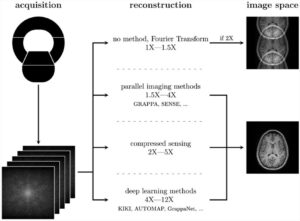Medical imaging AI is progressing fast, boosted by an industrious community and technology advances. The market, however, is not big enough to support all the companies involved in the field and European radiologists still lack proper training, according to Simon Harris, principal analyst at Signify Research.
What are the current market trends?
The technology is starting to mature. It is coming through what was once largely driven by research projects from academic sites and a few start-ups to commercialization. The first line of products has just received FDA and CE approvals. The same thing is happening across Asia.
Products themselves are evolving. Solutions used to focus on specific tasks, i.e. detecting breast lesions or lung nodules, but now algorithms are being developed with broader capabilities, for example, to cover a whole-body area.
Functionality has been improved. For example, quantification enables not only to detect but also to measure a lesion, perform texture analysis, find a position, determine growth, etc. All these functions give the radiologist much more information for decision-making.
The next step is bringing in different types of information, by looking at previous scans and patient history, to allow radiologists to work with more than just medical images when doing a diagnosis.
Did you see any interesting development at ECR 2019?
A lot of AI vendors do very similar things. Lung nodule and breast lesion detection are classical examples. We didn’t spot a very unique solution during the show.
The other notable trend was that the established PACS and modalities vendors were much more active this time around. These companies are getting much more serious about AI. Undoubtedly, there is a lot of marketing hype, but they are trying to progress their AI offer, particularly the PACS vendors.
My take away message from ECR is that we’re moving away from ‘AI for the sake of AI’ to more thinking of how AI works in medical imaging. Companies are starting to give much more thought to where AI is going to have the most impact and bring real clinical value.
European radiologists do not seem as knowledgeable as their US counterparts. It’s clear that AI is here to stay in radiology, so radiologists must receive a proper education. The industry needs to do more in that regard. We need more AI luminaries from radiology in Europe. There are a few out there, but they must take a stand.
What should healthcare providers look for when buying an AI product?
Clinical validation is the first thing to consider. It’s important that customers do their own diligence and make sure that the solutions they buy are fit for purposes. The data used to train the algorithm needs to be truly representative of the hospital’s patient demographics if it’s going to work properly. An algorithm that’s been trained purely on data in China may not work as well when applied to a different population. One also has to make sure that there’s diversity in terms of patient type, age, type of scans, etc.
My advice to providers would be to really quiz the algorithm developers as to how robust was the data used to train it and to check out if and how the algorithm was tested, and if another dataset was used for that purpose.
Integration is paramount. How well is this algorithm going to integrate into my daily workflow? I want AI to flow into my PACS; I don’t want to go to a dedicated AI viewer. AI shouldn’t slow me down.
There must also be a justification of investment and a clear return on investment.
What will happen next?
Products will become more and more sophisticated and provide a prediction for malignancies, and AI will directly be embedded into the modalities. AI needs to become invisible to the user and appear as a feature that runs in the background on your scanner, PACS or advanced visualisation platform. This will be the key direction in which the industry starts travelling.
Start-ups, if they are to survive, need to partner with the equipment manufacturers, because selling AI as a single product will not work well. AI is making the medical imaging industry more open to partnerships. Start-ups have had the early lead and brought solutions to the market first. We’re already starting to see big vendors offering AI in their products. Established companies will probably catch up on the small companies within the next couple of years because they now have more results, more financial resources, better access to data, a partnership with providers, and their platforms to sell AI tools.
Will investment for AI continue to flow?
It’s going to get increasingly hard for start-ups to obtain more funding. Investors have become much more informed and cautious. They’re seeing some of the challenges that lie ahead on the market, for example, clinical validation, integration, and clinical value.
Some of the current start-ups probably won’t be around in 3-4 years’ time. We’re tracking over 100 companies, which is a lot for what remains a really small market. It will take time before AI becomes mainstream and I am not sure that some investors will have the patience it takes to wait for the market to take off in great ways.
But there are still opportunities to get funding for those who develop products that are truly unique. With a solid business case, they have a good chance of surviving.
Signify Research is a UK-based market data provider specializing in healthcare technology, with a global scope. Its founder and managing director Simon Harris has 23 years of experience in technology market intelligence and has served as Executive Vice President at IMS Research and Senior Research Director for IHS Inc.’s Technology division.













